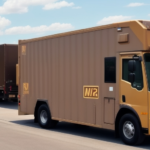How to Correct UPS Shipping Charges for Worldwide Saver Delivery
UPS Worldwide Saver Delivery is a reliable shipping solution for e-commerce businesses that need to send packages globally. This service ensures that your packages arrive at their destination quickly and safely. However, inaccurate UPS shipping charges can create challenges for both businesses and customers. In this article, we'll explore the common reasons for inaccurate UPS shipping charges and provide actionable tips on how to calculate correct shipping fees to avoid costly mistakes.
Understanding UPS Worldwide Saver Delivery
UPS Worldwide Saver Delivery offers fast and dependable delivery to over 220 countries and territories worldwide. With this service, you can ship packages weighing up to 150 pounds. UPS provides a variety of shipping options to meet the diverse needs of businesses, including express, standard, and freight delivery.
One of the key benefits of using UPS Worldwide Saver Delivery is the ability to track your package in real-time. This service provides a tracking number that allows you to monitor the progress of your shipment from departure to arrival. This feature enables you to keep your customers informed about the status of their orders and helps you manage your inventory more effectively.
In addition to fast and reliable delivery, UPS Worldwide Saver Delivery includes customs clearance services. UPS handles all necessary paperwork and procedures required to navigate customs in the destination country. This can be a complex and time-consuming process, but with UPS managing it for you, you can be confident that your package will arrive on time and without any issues.
Common Reasons for Inaccurate UPS Shipping Charges
One of the most common reasons for inaccurate UPS shipping charges is incorrect weight and dimensions of the package. UPS calculates shipping charges based on the weight and dimensions of the package. If these details are inaccurate, UPS may charge you more than the actual cost of the shipment. Another common reason for inaccurate shipping charges is incorrect destination information. If the destination address is wrong, UPS may apply additional charges to redirect the shipment to the correct location.
Additionally, selecting the wrong shipping service can lead to inaccurate UPS shipping charges. UPS offers a variety of shipping services, each with different delivery times and costs. Choosing a service that doesn't match your needs can result in unnecessary expenses. It's essential to carefully review available shipping services and select the one that best fits your requirements to avoid inaccurate charges.
The Importance of Accurate Shipping Costs for E-commerce Businesses
Accurate shipping costs are crucial for e-commerce businesses that ship products worldwide. Customers expect reasonable shipping charges and may abandon their shopping carts if the shipping costs are too high. Accurate shipping costs also help businesses remain competitive in a crowded market. If your shipping charges are too high, customers might choose your competitors instead.
Moreover, accurate shipping costs impact profit margins. Incorrect shipping calculations can lead to businesses losing money on each sale, which is particularly problematic for small businesses with limited resources. Ensuring accurate shipping costs helps businesses price their products correctly and maintain profitability.
Finally, accurate shipping costs enhance customer satisfaction. When customers receive their orders on time and at a reasonable cost, they are more likely to be satisfied with their shopping experience. This can lead to repeat business and positive reviews, which are essential for long-term growth and success.
How to Calculate Correct UPS Shipping Charges for Your Products
Calculating the correct UPS shipping charges for your products is essential for accurate billing. Here’s how you can ensure your calculations are precise:
- Determine Accurate Weight and Dimensions: Use high-quality weighing scales and measuring tools to get the exact weight and dimensions of your package.
- Specify Origin and Destination Accurately: Ensure that the origin and destination addresses are correct to avoid additional charges.
- Use the UPS Shipping Calculator: Utilize the UPS shipping calculator available on their website to estimate shipping charges based on weight, dimensions, and destination.
- Select the Appropriate Shipping Option: Choose the right shipping option—ground, air, or international—based on your delivery timeline and budget.
- Consider Package Value: For valuable or fragile items, consider purchasing additional insurance to protect your package during transit. UPS offers various insurance options for an additional fee.
Tips for Reducing Shipping Costs with UPS Worldwide Saver Delivery
Businesses can reduce their shipping costs with UPS Worldwide Saver Delivery by implementing the following strategies:
- Negotiate Better Rates: If you have high shipping volumes, negotiate volume-based discounts with UPS.
- Choose the Right Packaging: Use lightweight and compact packaging to reduce shipping rates.
- Utilize UPS Technology Tools: Tools like UPS WorldShip help streamline the shipping process and minimize errors.
- Select Cost-Effective Shipping Options: For non-urgent deliveries, opt for cheaper options like UPS Ground instead of air shipping.
- Use UPS Smart Pickup: Automate pickup schedules for packages to avoid manual scheduling and reduce costs.
Additionally, properly preparing packages by securely packing items, correctly labeling parcels, and avoiding unnecessary materials can prevent damaged packages and surcharges, leading to lower shipping costs.
Avoiding Common Mistakes When Estimating Shipping Costs
To avoid common mistakes when estimating shipping costs, businesses should follow these best practices:
- Invest in Quality Tools: Use accurate weighing scales and measuring tools to determine the precise weight and dimensions of packages.
- Double-Check Package Details: Verify the weight, dimensions, and destination address before shipping.
- Consider Dimensional Weight: UPS considers both actual weight and dimensional weight. Use the greater value to calculate shipping charges.
- Research Shipping Options: Compare different shipping methods and choose the most cost-effective solution.
- Factor in Additional Fees: Be aware of any extra fees or surcharges, such as fuel surcharges or residential delivery fees.
Using UPS Shipping Tools to Ensure Accurate Shipping Rates
UPS offers several shipping tools that help businesses ensure accurate shipping rates:
- UPS WorldShip: A comprehensive shipping software that allows businesses to create shipping labels, track packages, and manage returns efficiently.
- UPS CampusShip: A web-based shipping tool designed for businesses with multiple locations, enabling centralized shipping management.
- UPS Quantum View Manage: Provides a comprehensive view of shipping operations, including real-time package tracking and alerts.
- UPS Shipping Calculator: Helps businesses estimate shipping costs based on package weight, dimensions, and destination.
Additionally, UPS offers various packaging options, such as flat-rate boxes, which can be cost-effective for shipping heavier items over long distances. Eco-friendly packaging options are also available to help businesses reduce their environmental impact while saving on shipping costs.
How to Negotiate Better Rates with UPS for International Shipping
Negotiating better rates with UPS for international shipping can lead to significant savings. Follow these steps to negotiate effectively:
- Analyze Shipping Volumes and Patterns: Understand your shipping volumes and identify patterns to leverage in negotiations.
- Research Competitors' Rates: Compare UPS rates with competitors to understand the market and strengthen your bargaining position.
- Secure Volume-Based Discounts: Businesses with high shipping volumes can negotiate discounts based on their shipping frequency.
- Consider Nature of Goods: Negotiate rates specific to the type of goods being shipped, taking into account factors like size, weight, and fragility.
- Optimize Timing of Shipments: Plan shipments during off-peak times to avoid premium rates during high-demand periods.
Best Practices for Tracking and Managing Your UPS Shipments Globally
Effective tracking and management of your UPS shipments globally can enhance operational efficiency and customer satisfaction. Implement the following best practices:
- Use Tracking Tools: Utilize tools like UPS CampusShip and UPS Quantum View Manage for real-time tracking and alerts.
- Communicate with Customers: Provide customers with tracking information and regular updates on their shipments to keep them informed and satisfied.
- Use a Centralized Platform: Integrate a centralized platform that connects with your existing systems to streamline the shipping process and reduce errors. UPS WorldShip is an example of such a platform.
- Monitor Shipping Performance: Regularly review shipping performance metrics to identify areas for improvement and ensure timely deliveries.
In conclusion, UPS Worldwide Saver Delivery is a reliable shipping service for businesses aiming to ship products globally. However, accurate shipping cost calculations are vital to avoid financial losses and maintain customer satisfaction. By following the strategies outlined in this article, businesses can ensure correct shipping charges, reduce shipping costs, and provide a positive shopping experience for their customers.






















